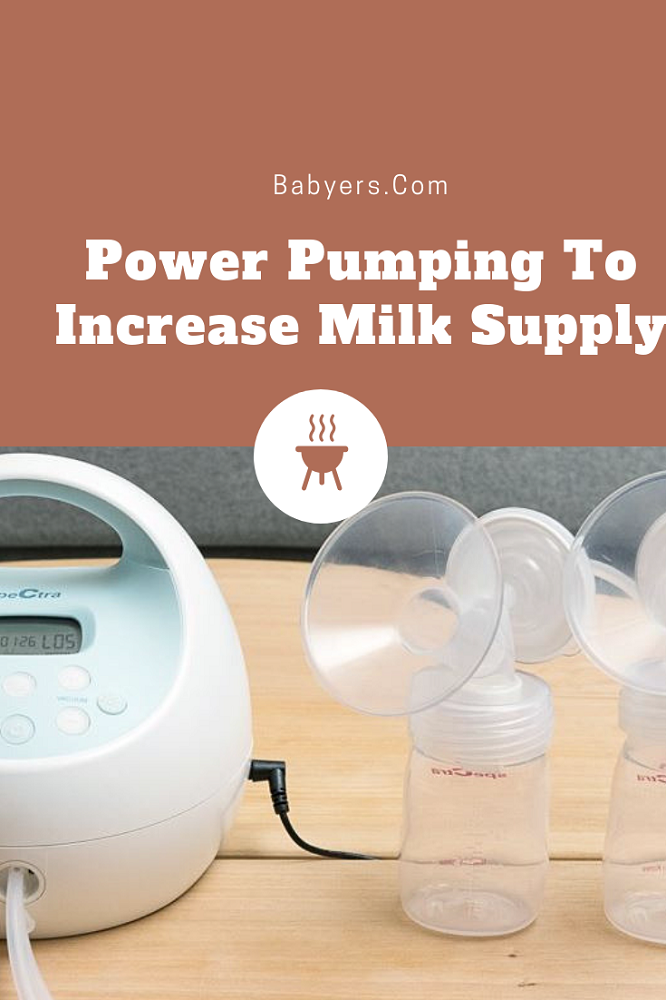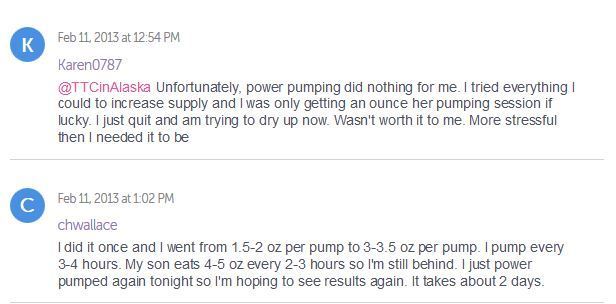Power Pumping To Increase Milk Supply
Power pumping is very popular especially with mothers with low milk production. However, this is not a technique that all breastfeeding mothers should try it, especially if your milk production is already sufficient to meet the needs of your baby. (See recommended pump for power pumping here)
This guide will help you understand the concept of power pumping and also give some tips on how power pumping can be a success.
Table of Contents
Does power pumping work?
Milk production is a process of supply and demand. If there’s milk demand, the more your breast will produce naturally. If the body doesn’t respond to the “more milk demand needs”, the best way is to get the body to understand that there’s more milk demand.
This is done by pumping using a manual or electric breast pump at certain times of the day. In addition to routine breastfeeding, these extra pump sessions increase demand and stimulate increased milk supply.
That’s precisely what Power Pumping does, but the extra pump sessions are completed in one hour instead of distributing them. Many working moms find it easier to adapt to their daily routines, but it requires dedication and patience.
Some women may need up to four or five days to see some good results. Working with a healthcare professional or a lactation consultant can help you solve your problems and find alternative methods when pump performance is not right for you.

Pumping schedule to increase milk supply
The major problem many mothers have with power pumping is deciding when to end their power pumping session. When you are ready for breastfeeding, it is essential that you do not get too close to your baby’s natural feeding session.
Many women pump directly after feeding their baby and make sure they have enough time to produce milk before their next meal.
Others do better when pumping in the morning because most women produce the most milk at this time of the day. You can combine either of the methods or stick to one that matches your lifestyle.
- Pump for 10 minutes, and rest for 10 minutes. This is the most straightforward pumping program, and it should be repeated for one hour. There are three pump sessions of 10 minutes in one hour. If you do not have time to pump for one hour, you can split the schedule into two 30-minute sessions at different times of the day.
- A longer pump session then two shorter sessions. Pump for twenty minutes, rest for ten minutes, pump for ten minutes, rest for ten minutes, then pump for 10 minutes. It’s a bit more complicated, but it gives you more time to start pumping.
- This may look like many pumping sessions over a short period. Remember, however, that you are imitating the actions of a hungry and devastating baby. A baby in need of nutrition goes to the chest and tries to feed. This extra pumping session works with your baby’s diet program.
Do you know what power pumping is? http://t.co/egDtQGhaze #breastfeeding #powerpumping #baby pic.twitter.com/tJ4FQzuQBj
— theAsianparent (@theAsianparent) July 4, 2015
The ideal time to stop power pumping
This is not a long-term breastfeeding technique. Once your milk production increases, you must stop the power pumping session.
You may still need to pump for a day or two to maintain a steady milk supply but remember this is not a permanent addition to your daily routine. Perform power pumping until sufficient and steady milk supply is available, and then return to your normal nursing program.
How long does it take to increase milk supply?
Power pumping is a safe way to improve your milk production. You can use the milk pumped to feed your baby, but some mothers do not want to do this because they do not want to take their baby in the bottle.
When to start power pumping?
The first step before starting power pumping is validating that you need to improve your milk production.
Some mothers always doubt that they’re not providing enough for their baby when the truth is that they are providing an adequate supply. In this case, power pumping can lead to excessive milk production, making you feel clogged and uncomfortable.
You can schedule an appointment with a lactation consultant to make sure to verify that you genuinely need to power pump.
If you are sure that you need to increase your milk production and feel that power pumping is the only method right for you, then its recommended to start by drafting a power pumping session.
Choose a session or consult with a lactation consultant to help you create an individual pumping plan. It may take a couple of days for the results to be achieved so don’t give up too soon.
Power pumping results
Well, I don’t know how I could answer this question. I’m not a professional lactation consultant but as a fellow mom here is what I can say.
This process does work for some moms and it might not work for others. Some of my close mom friends have told me saw an increase in milk supply after 3-5 days of power pumping while others never had any change.
Below are some screenshot from a popular forum – check them out and see what other moms out there had to say about power pumping.
Conclusion:
There you have it moms. Power pumping does work, it did work for my case but I only had to power pump when my firstborn was born. (Check out the pump I recommend here). Though I’ve never had to pump after my two other kids were born.
Please share your thoughts in the comment section below. You can also read my latest articles on how much you should be producing when exclusively pumping and how often to breastfeed your newborn.
Hi, I'm Tanya Madsen, a stay at home mother of 3 and a full time blogger. I participate in Amazon affiliate programs and earn a commission when you click over from our site. It won't cost you an extra dime (in fact you'll usually get a discount), so it's a win-win.


